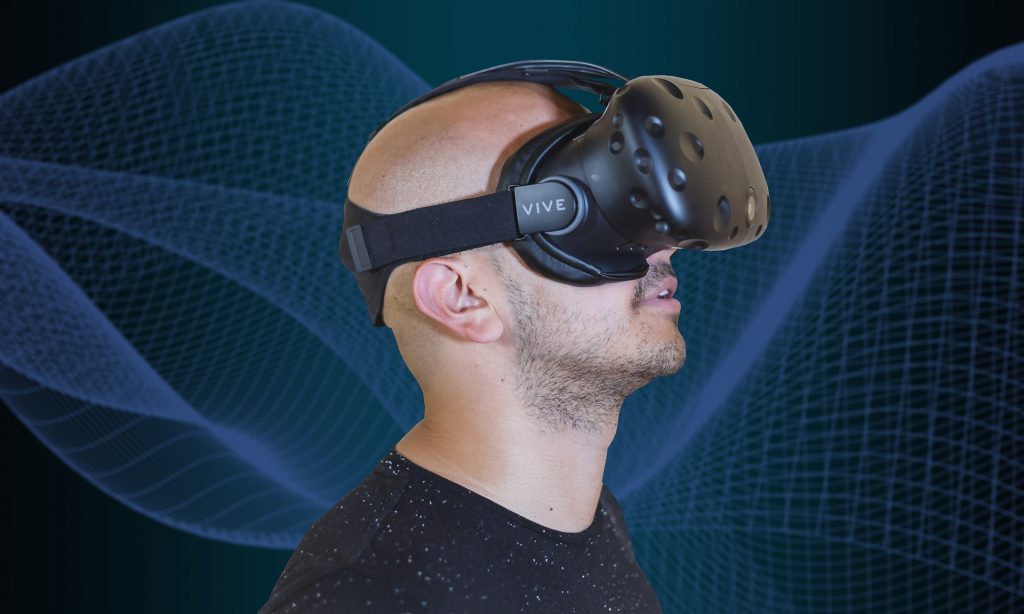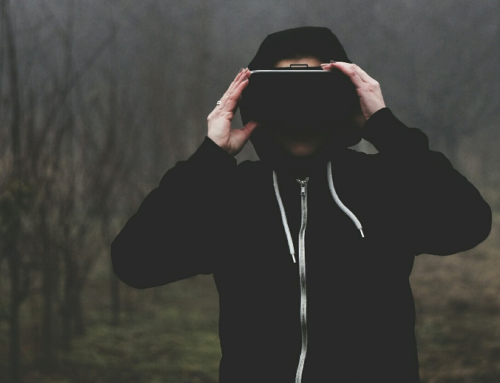Was Sie über die Geschichte der Virtual Reality wissen sollten.
In den letzten Jahren hat die Begeisterung um Virtual Reality (VR) ein Allzeithoch erreicht. Ausnahmslos jeder, der von der VR-Technologie hört, ist auf einer gewissen Weise interessiert und schon zahlreiche Personen haben damit begonnen, die VR-Technologie zu nutzen. Dennoch warten noch viele Menschen auf die weitere Entwicklung, bevor es zu einer breiten Einführung kommt. Dies ist vor allem auf die Tatsache zurückzuführen, dass VR eine aufstrebende Technologie mit Unterstützern ist, die glauben, dass VR das Potenzial hat, viele Bereiche zu verbessern und zu revolutionieren, darunter Bildung, Wirtschaft, Forschung, Militär, Therapie, Reisen, Kunst, Design, um nur einige zu nennen. In dem folgenden Beitrag möchten wir einen Blick auf die Geschichte der VR und insbesondere der VR Headsets werfen.

Einführung in die VR-Entwicklung.
Obwohl die Technologie neu ist, wird der Begriff „virtuell“ seit den 1400er Jahren verwendet, um „etwas im Wesentlichen oder Effekt zu beschreiben, dass in der Realität nicht wirklich existiert“, dies ist die früheste Verwendung des Wortes, das in einen modernen Kontext passt und ein Vorläufer der Bedeutung von virtuell ist, die Menschen heute verstehen. Im Jahr 1938 benutzte der Dramatiker Antonin Artaud den Begriff „realite virtuelle“ in einer Sammlung von Aufsätzen, die dieser veröffentlichte, um die illusorische Natur von Figuren und Objekten zu kommentieren. Er war der Meinung, dass die Zuschauer eines Theaterstücks den Unglauben an die Wahrhaftigkeit der Geschichte aufgeben und sie als Realität sehen sollten – ein Thema, das heute noch in VR verwendet wird. Im Jahr 1958 wurden seine Werke dann als „The Theater and ist Double“ auf Englisch übersetzt und veröffentlicht, dies ist die früheste Nutzung der Virtual Reality.
Die VR-Entwicklung zwischen 1960 und 2000.
Mithilfe von Recherchen haben wir herausgefunden, dass die früheste Form der VR 1962 entstand, als Morton Heilig das Sensorama baute. Es war ein Gerät, vor dem der Benutzer saß, während sein Kopf auf vier Seiten von einem Bildschirm umhüllt war, und sie sahen sich einen von fünf Filmen an, die alle die Sicht, den Ton, den Geruch und den Touch miteinander verbanden. Da das Gerät überholte digitale Computer hatte, war es mechanisch.
Im Jahr 1968 entwickelten Ivan Sutherland und Bob Sproull das erste Head Mounted Display (HMD) System für immersive Simulationsanwendungen. Da es sich um die erste HMD handelte, waren sowohl die Qualität der Schnittstelle als auch der Realismus der Simulation eher gering, und sie wog so viel, dass sie mit Metallseilen von der Decke abgehängt werden musste.
Von den 1970er bis 1990er Jahren lieferte die VR-Industrie hauptsächlich Geräte für medizinische, Flugsimulations-, Automobil- und militärische Trainingszwecke. Die NASA leistete in dieser Zeit auch bedeutende Beiträge, insbesondere durch ihren Artist in Residence David Em, der schiffbare Welten für das Jet-Antriebslabor der NASA schuf.
Im Jahr 1979 entwickelte Eric Howlett das optische System Large Expanse, Extra Perspective (LEEP). Das System beeindruckte die Anwender durch sein Tiefenempfinden, das durch die stereoskopische Bildgebung und das große Sichtfeld und den entsprechenden Realismus erzeugt wurde. Das LEEP-System wurde 1985 für den Einsatz bei der NASA neu konzipiert und ist nach wie vor die Grundlage für die meisten VR-Headsets.
Atari gründete 1982 ein Labor für VR-Forschung, das jedoch zwei Jahre später wegen des nordamerikanischen Video Game Crashs von 1983 geschlossen wurde. Dies ist jedoch immer noch eine entscheidende Zeit in der Geschichte der VR, da dort große Namen in der VR-Community wie Tom Zimmerman, Scott Fisher, Jaron Lanier, Michael Naimark und Brenda Laurel beschäftigt waren (alle späteren Pioniere von VR). In den 1980er Jahren popularisierte Jaron Lanier den Begriff VR und gründete VPL Research. Sie entwickelten viele VR-Geräte, darunter den Data Glove, das EyePhone und die Audio Sphere. Als sie den Datenhandschuh an Mattel lizenzierten, um den Power Glove zu entwickeln, ist dies eine der ersten Gelegenheiten für ein erschwingliches VR-Gerät, das für die breite Öffentlichkeit leicht zugänglich war und nur 75 USD kostete.
In den 1990er Jahren erlebte die Augmented Reality (AR) und VR einen Boom, der den Nutzern ein sinnlicheres Gefühl vermittelt und es ihnen erstmals ermöglicht, ihren eigenen Körper im Verhältnis zu anderen im Raum zu sehen.
Im Jahr 1991 wurde der erste kubische Immersionsraum mit dem Namen „die Höhle“ von einer Doktorandin in Ihrer Doktorarbeit entwickelt. Dieser Durchbruch schuf eine multiprojizierte Umgebung und ermöglichte es den Menschen, Ihren Körper in Beziehung zu anderen im Raum zu sehen. In den Jahren 1989-1992 schuf Nicole Stenger den ersten immersiven Echtzeit-Film mit der Bezeichnung „Angles“. Zur Darstellung des Erlebnisses wurden Datenhandschuhe und hochauflösende Brillen verwendet. Zu einem Großteil dieser Durchbrüche trugen die ersten kommerziellen Veröffentlichungen von Verbraucher-Headsets ab den 90er Jahren bei.
Im Jahr 1991 veröffentlichte Sega VR Headsets für Arcade-Spiele und die Mega Drive Konsole. Im Jahr 1994 veröffentlichten sie den Sega VR-1 Bewegungssimulator Arcade Attraction, die die Kopfbewegung verfolgte. 1995 entwickelte Nintendo die Virtual Boy-Konsole, und schließlich versuchten Unternehmer 1999, das zu schaffen, was sie „das Rigg“ oder einen Prototyp von Computermonitoren nannten, die die Benutzer auf und um ihre Schultern tragen würden.
VR-Entwicklung 2000 bis heute.
Seit dem Jahr 2000 ist die VR-Technologie weiter gewachsen und wohl die Periode mit der größten Innovation seit der Gründung von VR. Im Jahr 2001 schuf SAS Cube den ersten PC-basierten kubischen Raum, der dann zur Entwicklung von Virtools VR pack führte, einem Bibliothekspaket-Add-On. Nach der Veröffentlichung von Google Street View im Jahr 2007 führte Google 2010 den stereoskopischen 3D-Modus für Street View ein. So konnten die Benutzer auf der Straße stehen und sich physisch im 3D-Bild umsehen. Im Jahr 2010 schuf der 18-jährige Palmer Luckey den ersten Prototyp des Oculus Rift, des berühmten VR-Headsets. Es war das erste Mal, dass ein Sichtfeld von 90 Grad verwendet wurde, und das neue Oculus Rift Headset vertraute auf die Rechenleistung eines Computers, um seine Bilder darzustellen. Dies belebte das Interesse am VR-Space wieder.
Im Jahr 2012 war auch ein großes Jahr für Palmer Luckey, dieser startete eine Kickstarter-Kampagne für Oculus Rift, die 2,4 Millionen US-Dollar an Spenden einbrachte. Zwei Jahre später, im Jahr 2014, kaufte Facebook das Unternehmen Oculus VR für 2 Milliarden US-Dollar.
Im Jahr 2014 war ein spannendes Jahr für die VR-Community. Das VR-Unternehmen Oculus wurde nicht nur von Facebook gekauft, sondern Sony kündigte auch sein VR-Headset für die PS4 unter der Bezeichnung „Project Morpheus“ an. 2014 war auch das Jahr, in dem Samsung die Gear VR ankündigte, das schließlich im Jahr 2016 auf den Markt kommen sollte.
Im Jahr 2016 wurden HTC Vive, Oculus Rift und PlayStation VR veröffentlicht. Es war auch das erste Jahr, indem VR den Verbrauchern zu Hause für Spiele und Medienunterhaltung zugänglich wurde. Alle Headsets hatten mitgelieferte tragbare Geräte, die die Bewegung und den Gebrauch der Hände beim Anschließen an VR ermöglichten. Aufgrund der hohen Kosten der VR-Headsets und -Handys waren die meisten VR-Nutzer im Jahr 2016 von der Erschwinglichkeit der VR nicht beeindruckt. Es ist auch wichtig zu beachten, dass der Juni im Jahr 2016 der Geburtsmonat von Veer ist.
2017 war das Jahr, in dem die Lücke zwischen Erwartungen und Realität geschlossen wurde. Im Jahr 2016 waren viele von ihnen vom VR-Potenzial begeistert, dachten aber, dass der Inhalt spärlich und der Preis von VR-Headsets zu teuer sei. Im Jahr 2017 bündelte Sony PS4-Konsolen mit PSVR-Headsets, um mehr Nutzer zu gewinnen. Diese Tatsache, gepaart mit dem Sommerverkauf von Hardware durch Oculus, beflügelte den Kauf von VR-Headsets und -Geräten. 2017 ist auch das Jahr, in dem Microsoft in die VR-Branche einstieg.
Im vergangenen September veranstaltete Oculus die OC5, ihre jährliche Konferenz über Hardware-, Software- und Content-Innovationen in VR. Auf der Konferenz kündigte Oculus Quest an, das im Frühjahr 2019 erhältlich sein wird. Es ist das erste All-in-One-Headset mit positionell gesteuerten Controllern, ein exklusives Star Wars Spiel, das es dem Spieler ermöglicht, ein Lichtschwert wie ein Jedi aufzunehmen, und eine professionelle, einsatzbereite 3D/360-Kamera, die in Zusammenarbeit mit Facebook und RED entwickelt wurde. Auf der E3-Videospielkonferenz kündigte HTC einen Adapter für den Vive an, um ihn drahtlos zu machen, der diesen Sommer auf den Markt kommen soll.
Veer`s Platz in der Geschichte des VR.
Während meiner Recherche und später dieser Liste fand ich einen deutlichen Mangel an Informationen über VR-Plattformen. Während sich die meisten auf Hardware und Content konzentrieren, gibt es nur eine echte Plattform, die das Betrachten von VR-Inhalten über das Internet ermöglicht und dabei handelt es sich um Veer. Veer VR ist eine bahnbrechende globale VR Content Community, die im Juni 2016 gegründet wurde. Es ermöglicht es Erstellern von Content, Inhalte wie Bilder und Videos in 360 Grad hochzuladen, und ermöglicht es Ihnen auch, auf den Veer Editor zuzugreifen, um ihre Inhalte zu bearbeiten. Die Website ist jedoch nicht nur auf Autoren beschränkt, sondern ermöglicht es den Nutzern auch, auf das Hochgeladene zuzugreifen, was das Interesse an VR und Benutzerbasis erhöht. Benutzer müssen keine Headsets besitzen, um Inhalte mit den Android- oder iOS-Anwendungen genießen zu können, und können auch Ihre Computerbildschirme verwenden, um alle 360 VR-Videos und -Bilder auf der Website zu erkunden. Da Veer jedoch mit Oculus zusammenarbeitet, sind Windows, Vive, Xiaomi, Oculus Go, Samsung Gear VR und Daydream VR-Headsets kompatibel. Veer will die herausragende Plattform für den Austausch hochwertiger digitaler VR-Inhalte sein, die zum Aufbau einer integrativen, internationalen VR-Community beitragen.
Vielen Dank für Ihren Besuch.


